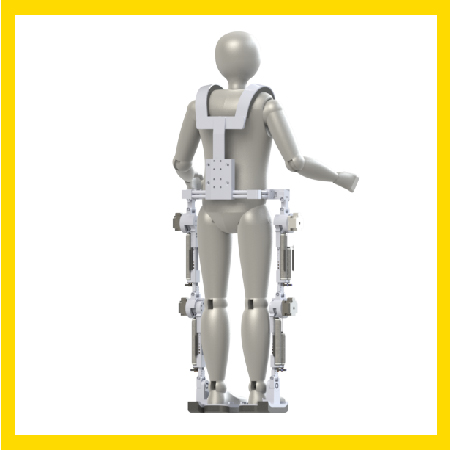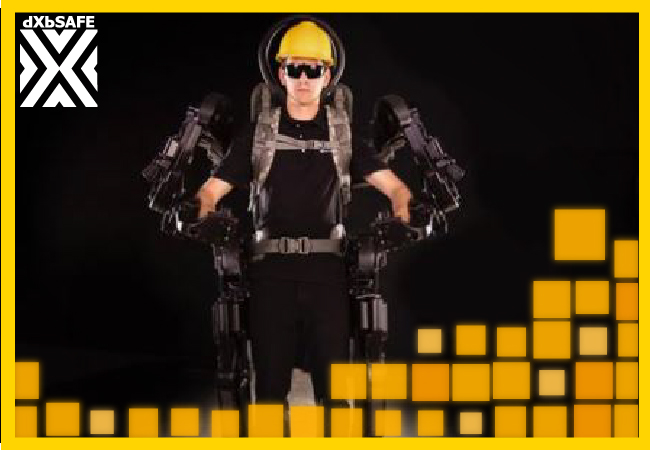Currency
July 21, 2018

There is a reason why the word "backbone" is synonymous with the chief support of a system or organization – the backbone, or spine, is also the foundation of the human skeletal system. While the spine is critical in human movement and a person's overall health and well-being, it is also very susceptible to injury from both prolonged overuse or overload and acute excessive force. Studies have shown that more than 80 percent of people will experience lower back pain at some point in their life, and addressing spine health has become a critical issue, particularly for our workforce.
For U.S. employers and employees, the total cost of low back pain resulting from on-the-job injuries is greater than $100 billion annually, and the average cost of a back-injury-related workers' compensation claim is between $40,000 and $80,000, according to the Spine Research Institute/OSHA. These numbers continue to climb each year with no tangible solution to this monumental problem in place. However, recent advances in powered, full-body exoskeleton technologies are shining a new light on the subject of spine health and back injuries and are shaping up to be a viable solution.

The spine is a remarkable and extremely complex system made up of 24 vertebrae stacked one on top of each other, with discs in between each vertebra that act as shock absorbers. The spine provides the main support for the human body, allowing for movement while protecting the spinal cord from injury—yet, its delicate structure actually makes it prone to injury.
The discs in between the vertebrae have a gelatinous core, acting as shock absorbers for the spine and allowing humans to move in many different dimensions. The problem with these discs, however, is that they are one of the very few structures in the body that do not have nerve receptors. If a person exceeds the load capacity that his or her spine will allow, there are no sensitive nerve endings telling the brain that he or she is experiencing a heavier load than his or her body can handle (i.e., experiencing pain or discomfort). When this happens, the vertebral endplates, which provide nutrients to the discs, fracture and build up scar tissue, making it harder to get nutrients into the discs and thereby creating weaknesses, or what the medical community calls "disc degeneration."
Disc degeneration is a gradual process that starts with losing disc height, leading to instability between each vertebra, and eventually could lead to a rupture of the disc, which then may require surgery. The only time a person will typically feel sensation around their spine is when they wear down their discs to the point where they start bulging out or rupture—the gelatinous core squirts out like jelly from a donut, bulging against structures outside of the disc and causing pain in the back and potentially the legs. This same degeneration process can also cause the small bones in the back of the spinal column to grind into one another.
Disc degeneration can be a very gradual process that could take weeks, months, or years to occur, and it is incredibly deceptive because damage can be done even if a human doesn't feel any discomfort. This complicated human anatomy, combined with the fact that many jobs require bending, lifting, or raising heavy objects, is why back injuries are so common and so costly to employers and employees.
How do we begin to solve—or, at a minimum, reduce—this massive problem for our workforce? There are a few simple ergonomics tips I can share to help alleviate some of these issues. In a very structured work environment, like assembly lines, one simple solution is to provide interventions to the workplace that raise the load higher off the ground and/or to turn it towards the person to minimize the load that the person experiences on their spine. We know that bending over excessively and twisting while lifting an object places the most strain on workers and causes the highest levels of injury. However, in many jobs that require heavy lifting—nursing, construction, manufacturing, and others—it is impractical or impossible to implement these type of workplace interventions because the load trajectory is constantly changing due to the context and layout of the workplace.
Exoskeletons are thought to be one potential solution to these difficult workplaces. It is important to note that while many exoskeletons promise to reduce injury and prolong years of healthy labor, not all exoskeleton technologies are created equal. Unpowered, or passive, exoskeleton technology, commonly found on the market today, may offload weight from certain body parts when carrying a heavy object, but it can redirect that stress to the back.
For U.S. employers and employees, the total cost of low back pain resulting from on-the-job injuries is greater than $100 billion annually, and the average cost of a back-injury-related workers' compensation claim is between $40,000 and $80,000, according to the Spine Research Institute/OSHA. These numbers continue to climb each year with no tangible solution to this monumental problem in place. However, recent advances in powered, full-body exoskeleton technologies are shining a new light on the subject of spine health and back injuries and are shaping up to be a viable solution.

Spine Health: 101
The spine is a remarkable and extremely complex system made up of 24 vertebrae stacked one on top of each other, with discs in between each vertebra that act as shock absorbers. The spine provides the main support for the human body, allowing for movement while protecting the spinal cord from injury—yet, its delicate structure actually makes it prone to injury.
The discs in between the vertebrae have a gelatinous core, acting as shock absorbers for the spine and allowing humans to move in many different dimensions. The problem with these discs, however, is that they are one of the very few structures in the body that do not have nerve receptors. If a person exceeds the load capacity that his or her spine will allow, there are no sensitive nerve endings telling the brain that he or she is experiencing a heavier load than his or her body can handle (i.e., experiencing pain or discomfort). When this happens, the vertebral endplates, which provide nutrients to the discs, fracture and build up scar tissue, making it harder to get nutrients into the discs and thereby creating weaknesses, or what the medical community calls "disc degeneration."
Disc degeneration is a gradual process that starts with losing disc height, leading to instability between each vertebra, and eventually could lead to a rupture of the disc, which then may require surgery. The only time a person will typically feel sensation around their spine is when they wear down their discs to the point where they start bulging out or rupture—the gelatinous core squirts out like jelly from a donut, bulging against structures outside of the disc and causing pain in the back and potentially the legs. This same degeneration process can also cause the small bones in the back of the spinal column to grind into one another.
Disc degeneration can be a very gradual process that could take weeks, months, or years to occur, and it is incredibly deceptive because damage can be done even if a human doesn't feel any discomfort. This complicated human anatomy, combined with the fact that many jobs require bending, lifting, or raising heavy objects, is why back injuries are so common and so costly to employers and employees.
Protecting the Spine Through Powered, Full-Body Exoskeleton Technology
How do we begin to solve—or, at a minimum, reduce—this massive problem for our workforce? There are a few simple ergonomics tips I can share to help alleviate some of these issues. In a very structured work environment, like assembly lines, one simple solution is to provide interventions to the workplace that raise the load higher off the ground and/or to turn it towards the person to minimize the load that the person experiences on their spine. We know that bending over excessively and twisting while lifting an object places the most strain on workers and causes the highest levels of injury. However, in many jobs that require heavy lifting—nursing, construction, manufacturing, and others—it is impractical or impossible to implement these type of workplace interventions because the load trajectory is constantly changing due to the context and layout of the workplace.
Exoskeletons are thought to be one potential solution to these difficult workplaces. It is important to note that while many exoskeletons promise to reduce injury and prolong years of healthy labor, not all exoskeleton technologies are created equal. Unpowered, or passive, exoskeleton technology, commonly found on the market today, may offload weight from certain body parts when carrying a heavy object, but it can redirect that stress to the back.









